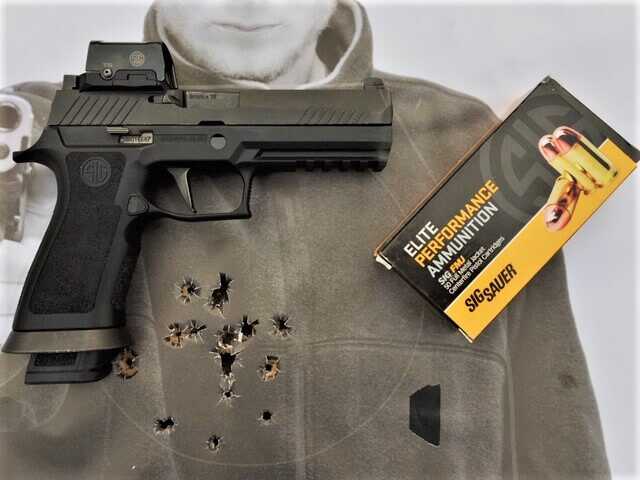
SIG Sauer’s new duty pistol optic, the ROMEO2 can be installed as an open-emitter, steel armored open emitter or a fully-sealed closed-emitter red-dot sight. It can endure the slide recoil velocities of a 10mm and offers water resistance and protection from environmental debris. It is a uniquely rugged sight with modular user-convertible configurations.
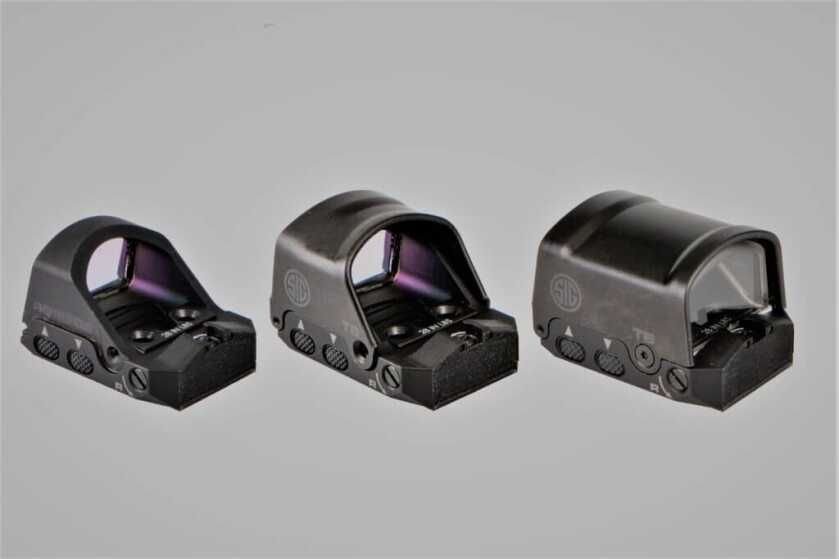
The Sig Sauer ROMEO2 Red Dot Sight is designed for duty use under hostile environmental conditions. It has been highly anticipated but in the COVID disarray of supply chains and work schedules, it has yet to arrive in gun stores. Manufactured in Oregon using high-quality optics and intensely rugged cases, these Red Dot Sights from Sig Sauer provide the extreme level of toughness coveted by military and law enforcement users.
One weakness of all handgun optics is their relative fragility. Even the best sights have vulnerabilities and all manufacturers have stepped up their games in this area with steel shrouds and reinforced bases. If you are a range plinker or average shooter, you don’t need these features. Trust me, duty guns exist in an environment where they are battered and abused. Maneuver and weather damage and degrade even the best optics. With ROMEO2, SIG has brought us a modular, durable duty sight with extended battery life ready for any situation. I believe that I could break iron sights easier than I could break a shrouded ROMEO2.
I had the opportunity to attend the SIG Academy Pistol Mounted Optics Instructor class. While there I was able to not only look at the ROMEO2, but shoot it… a lot. The two instructors, Justin and Doug, were very senior academy cadres and one of them had an engineering prototype of the ROMEO2 Red Dot which he estimated had already seen over ten thousand rounds. He offered his slide and sight for use in the class and I jumped at the opportunity. I have fired the ROMEO2 a few times, but this was a chance to test every aspect of the ROMEO2 over two days of intense shooting with a round count of 1000. Game on.
ORIGIN
The story of the ROMEO2 starts with the U.S. Army’s Modular Pistol Competition. When SIG won the contract with the M-17, there was not yet an Electro-Optic division. The Army had adopted the Leupold’s DeltaPoint Pro as its standard, so the M-17 was made with this footprint.

SIG’s corporate goal is to become a single-source provider. This allows SIG to produce a no-compromise package that includes optics, suppressors, ammunition, and training. The ROMEO2 is the culmination of a six-year journey for SIG’s Electro-Optic division to ruggedize the optics so they could submit a complete system for bid on future military contracts. There have been significant challenges along the way, but it seems that SIG is on the verge of shipping the elusive ROMEO2 to customers across the globe.
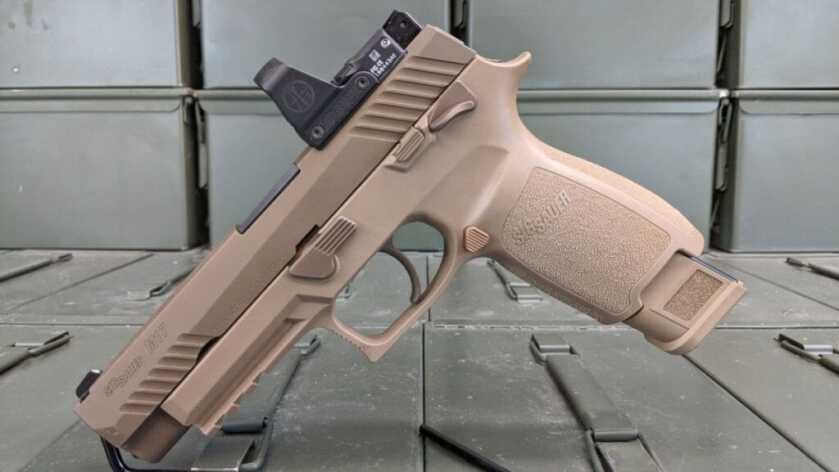
MADE IN THE USA
Most available handgun optics are made overseas. Recent lawsuits have shown that pirated intellectual property is a feature on some of these sights. Consumers buy these optics because of the low cost. Using slave labor and orphans to make sights is a considerable saving over American workers, but you get what you pay for. I recommend paying attention to where your optics come from and the company you are dealing with.
For completely different reasons, the U.S. Congress passed the Berry Amendment in 1952 which requires the Department of Defense (DOD) to give preference in procurement to domestically produced or manufactured products. They were (rightly) concerned that in times of crisis when increased manufacturing is needed, overseas factories may not be responsive or even hostile.
SIG’s American production facilities in New Hampshire (Guns), Arkansas (Ammunition), and Oregon (Optics) can design and produce products in-house, in America. While they still use some overseas suppliers, all of their high-tech military and law enforcement products are homegrown. This means no supply chain problems when plague or politics shake up international trade. It also means that when SIG provides a gun, it is part of a system with compatible ammunition, optics, suppressors, training, or anything else the user requires. This is no small accomplishment.
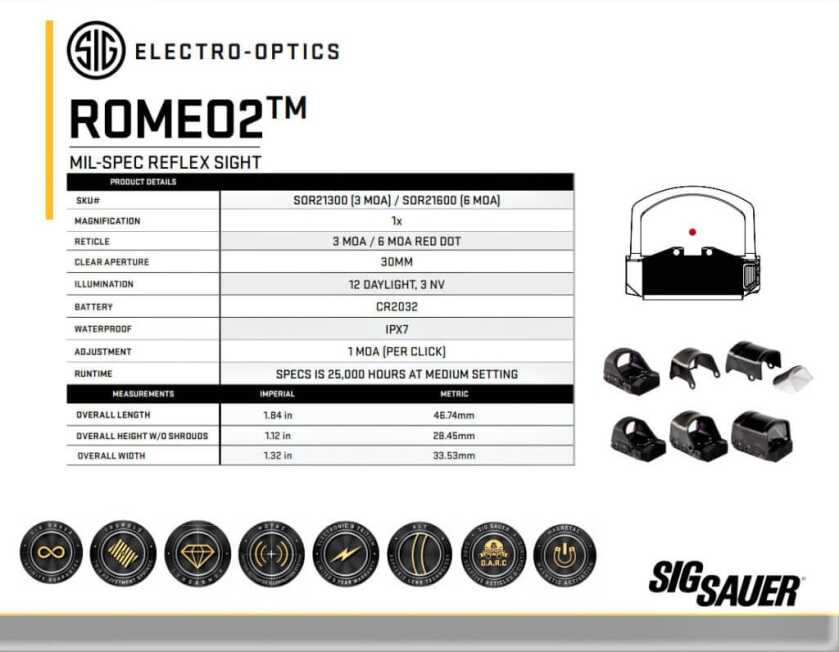
SIG ROMEO2 KEY FEATURES
Modular Shroud System
Integral Rear Backup Iron Sight
Weight: 2.1 oz.
PX-7 waterproof performance, plus a completely sealed and water-resistant rear window assembly
Loaded Chamber Indicator (LCI) Deflection Shield
Tool-less, side-loading CR2032 Battery
Fix-it stick Torque Wrench (this is a big deal because proper torque is critical for optics)
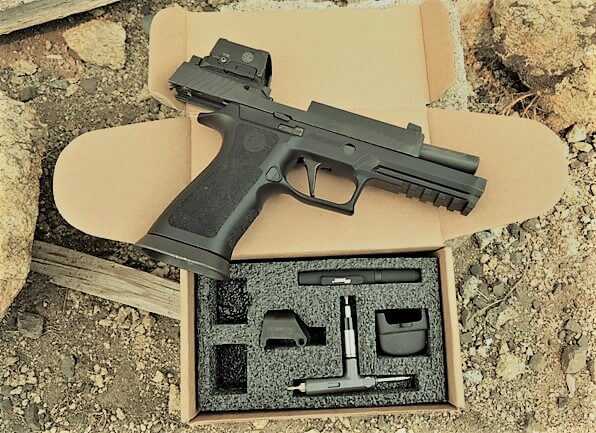
MODULAR SHROUD SYSTEM
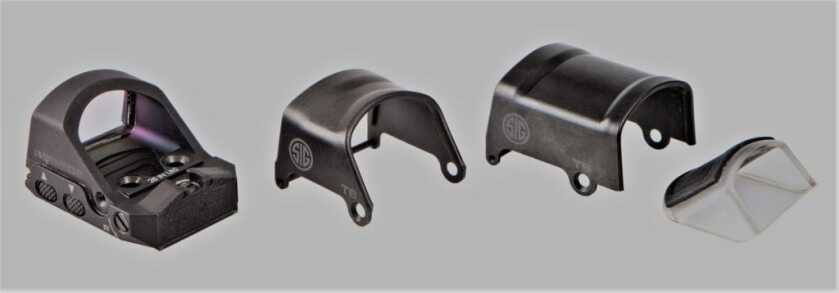
The Modular Shroud System is a significant innovation. You can run ROMEO2 like a traditional open reflex sight if durability and weather are not a concern.
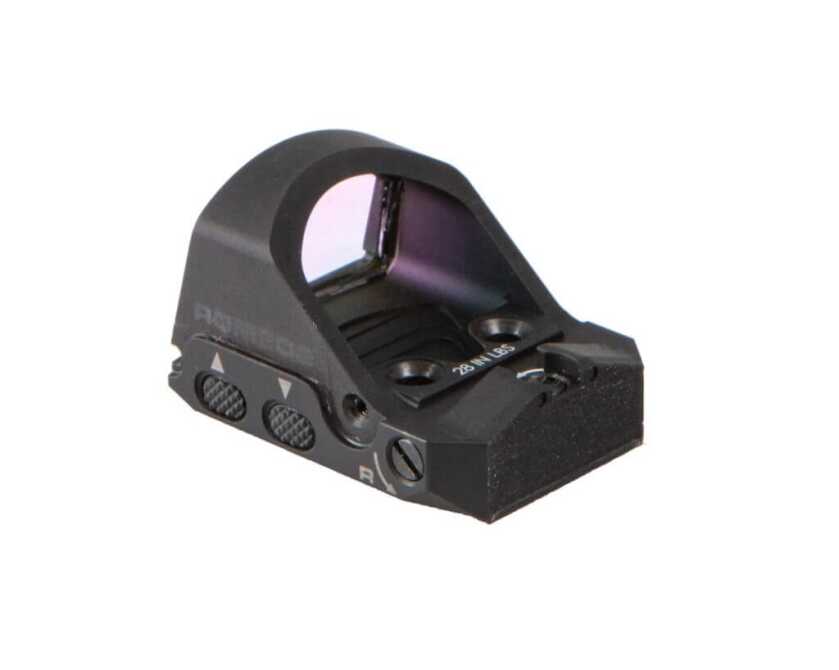
You can run it with the half shroud, which offers quite a bit of protection and still leaves an open reflex sight kind of profile. This should be very durable and still provide a great field of view. For most duty work this should be more than adequate.

If times are tough, you can select beast mode and run it with a full steel protective shroud and a polycarbonate window in the rear. When it is sealed up, dust, mud, water, and body fluids all stay outside. The emitter area remains pristine giving you that sweet red dot of death that puts the bullets on targe
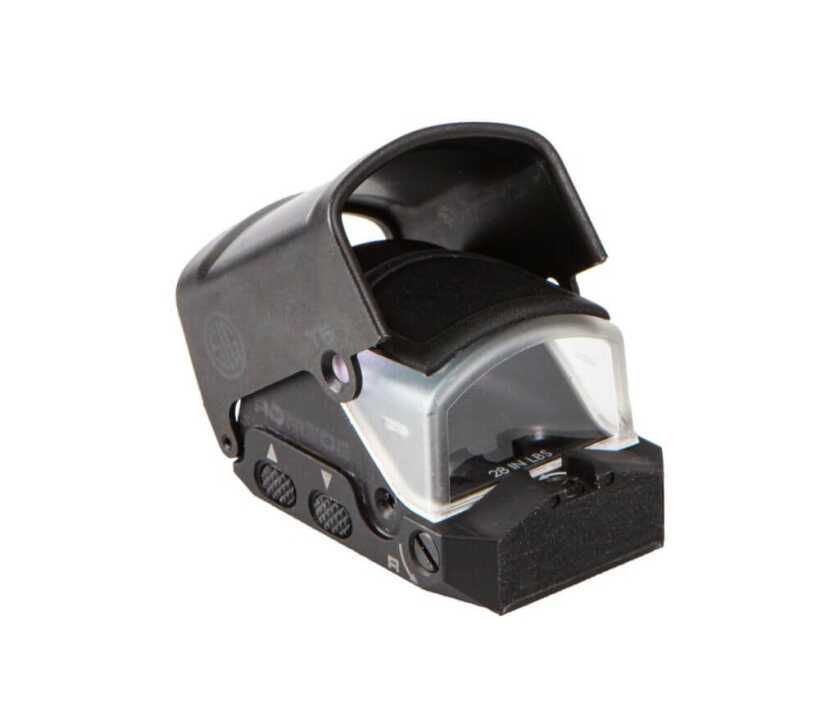
ROMEO2 is engineered with a glass-molded aspherical lens. This makes the entire field of view clear, scratch-resistant and void of distortion. The ROMEO2 I used was completely sealed and I didn’t reconfigure it. I figured if I could use it like this with no compromises, why not go with beast mode. In my class, there was no rain or snow but there was humidity and I did douse it with water. ROMEO2 didn’t have any issues with fogging or distortion due to the humidity.
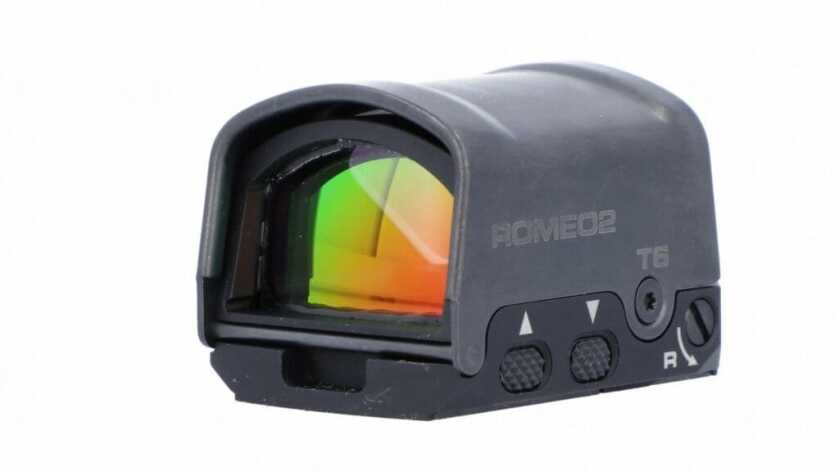
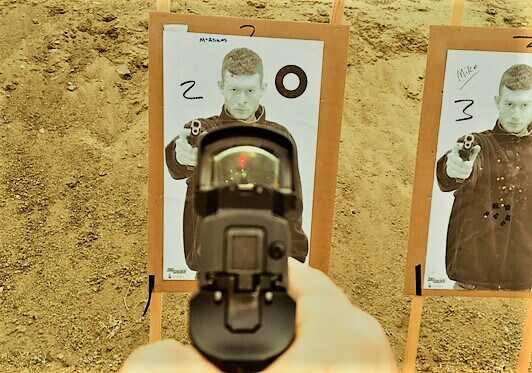
The adoption of handgun optics is relatively recent and it has produced a number of sight bases or “footprints”. This is an issue because your slide must accommodate the sight’s footprint or use an adaptor plate which adds to sight height and weight, neither of which is good. The Romeo2 uses the Army standard DeltaPointPro footprint which is compatible with SIG’s Pro series slides.

BATTERY LIFE ENHANCEMENTS
A serious issue for agencies considering adopting the use of handgun optics is changing batteries. Some systems require the sight to be removed which entails precise re-torquing and re-zeroing. This is a problem for users in the field, they must have training, tools and range availability.
SIG claims that at medium brightness setting, ROMEO2 provides a 20,000-plus-hour life. This is more than two years of constant on, but wait, there’s more. SIG’s Motion Activated Illumination, (MOTAC) further increases effective battery life by shutting down the system when not in use. It instantly powers up the sight when it senses motion. The red-dot reticle remains on for 2 minutes after idle.
A gun in the holster moves when the wearer moves, so MOTAC only takes effect when a gun is motionless. This is a big deal for battery life. Still need more power? ROMEO2 sports a new feature called Magnitac. When used with a sight cover or specially designed holster, a magnet deactivates the sight in the holster and turns on the red dot instantly when the handgun is drawn. ROMEO2 comes with a protective cover that shrouds the optic and contains a magnet to activate Magnitac. SIG is also working with holster makers to exploit this innovation.
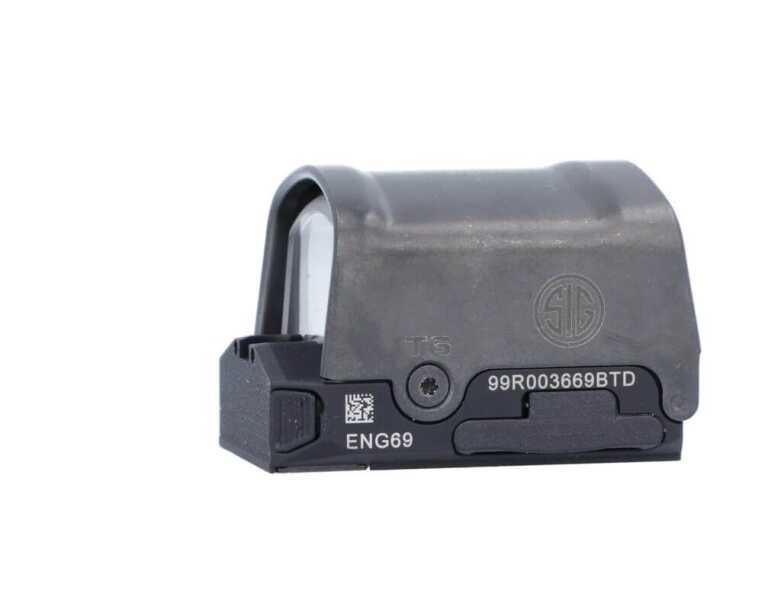
Even though new sights have amazing battery life, law enforcement and military users change batteries more often than manufacturer recommendations to ensure that their optics never go down. ROMEO2 features a side-loading spring-loaded battery tray to change the (very common and available) CR2032 battery without having to remove the sight and re-zero.
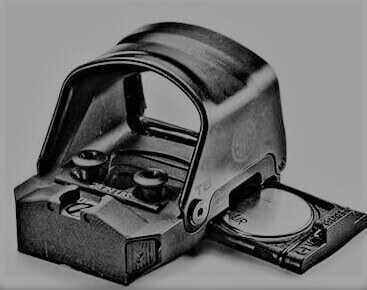
A quick word about batteries here. Many sights are slandered about function and battery life because of foreign-made poor-quality batteries. SIG recommends Energizer and Duracell batteries. This is not a great expense for a critical component of your system.
BACK-UP SIGHTS
The full sized slide I used in class came with SIG XRAY3 suppressor height sights which co-witnessed nicely. The bright green circle on the sight was awesome for dot out drills. ROMEO2 has an integrated rear sight. This is a great feature for guns with a sight plate that does not accept rear sights. It is serrated at the rear and has two black dimples which can be painted if you prefer a three-dot iron sight picture.
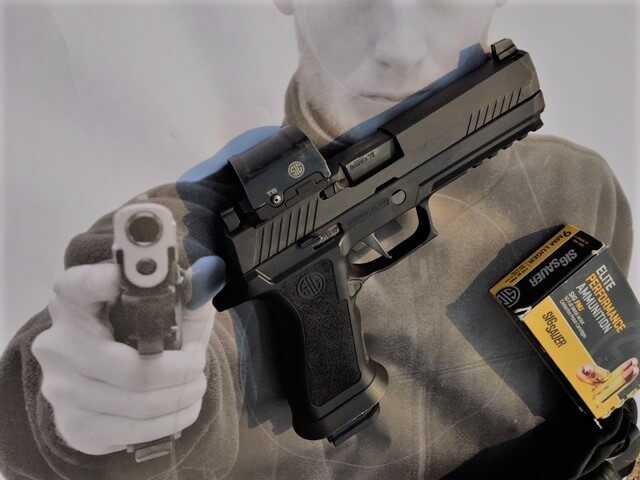
SHOOTING
If you are not familiar with Pistol Mounted Optics, let me catch you up on the part of the 21st century you missed. A red dot sight gives you the ability to shoot with both eyes open focused on the target (in fact requires it for proper use). Sight alignment is eliminated and the sight radius is infinite. It provides rapid acquisition and increased accuracy at all ranges. The dot is variable and makes shooting in the dark a snap. The dot provides a constant sight picture so shooting on the move and shooting at moving targets is significantly easier. For shooters with vision issues, it can be a game-changer.
Importantly for self-defense, an optics-equipped pistol enhances situational awareness, allowing the user to focus on a threat and the background while maintaining the ability to deliver accurate shots without a focal shift. Simply float the dot over your intended point of impact and smoothly press the trigger rearward. It is the most natural thing in the world.
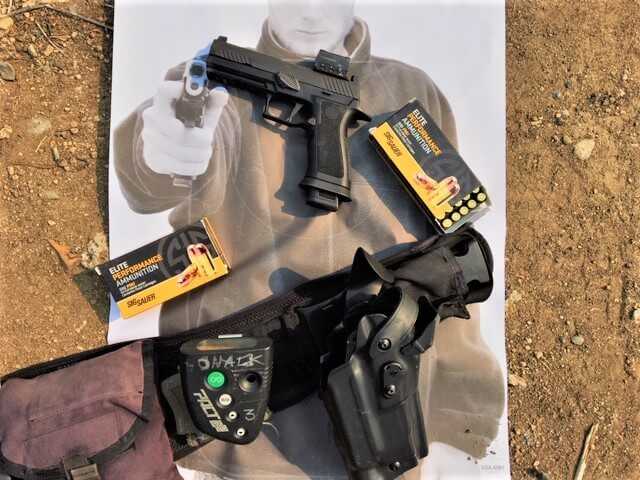
I have been shooting and teaching with modern optics such as the ROMEO1 and RMR for several years so I have overcome all the beginner problems with presentation and finding the dot. My Safariland 6392RDS easily accommodated the ROMEO2. SIG says any holster which will accommodate the ROMEO1Pro will handle the ROMEO2.
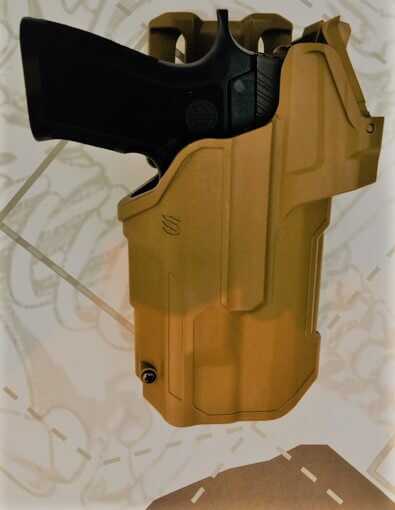
My gun for class was a P320RX with a ROMEO1 and an X-FIVE full-size grip. I was using an FBMG USA flat trigger and their MP3 enhanced fire control unit parts. I replaced my slide with a SIG full size slide with a 6 MOA ROMEO2 mounted.
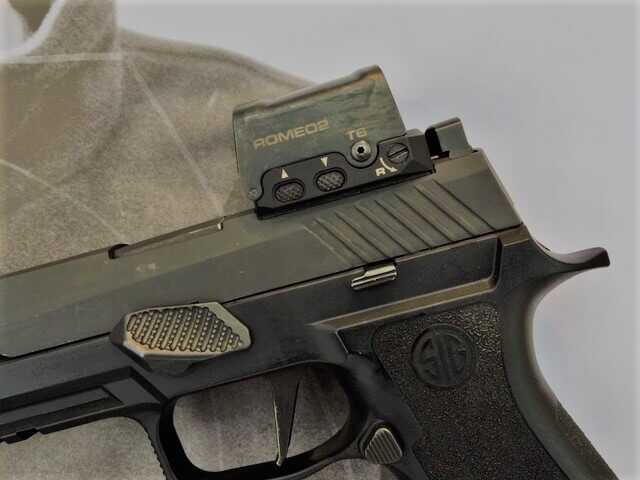
After starting with the obscured optic natural point of aim drills we zeroed at 15 yards. The sight adjustment is scaled at 1 MOA equals 1 click and using this I was on in one adjustment. The 6 MOA dot was a big change, I am used to 3 MOA. I found that I could adjust the brightness to make the dot present the look I wanted.
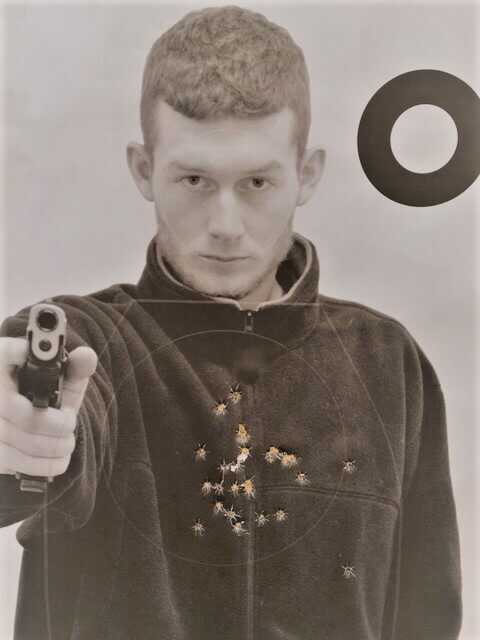
Over two days, we did dozens of drills working on every aspect of practical shooting. Most drills were performance-based, encouraging shooters to push themselves to a personal best. Draw and presentation, multiple targets and target transitions, one handed shooting, shooting on the move, and alternative positions.
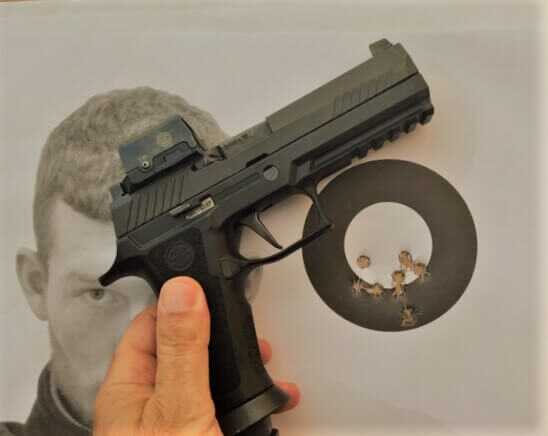
There were a series of drills designed to use the dot as a feedback tool to develop skills. The ability to track your sights through recoil and movement provides great information on how your gun is moving and allows you to test techniques to manage recoil and get faster hits.
There were some specific optic skills exercised, downed optic drills, off-set drills, barricades, malfunctions, and manipulations. I very intentionally manipulated the gun by the optic for malfunctions and against the barricade with no problems at all.
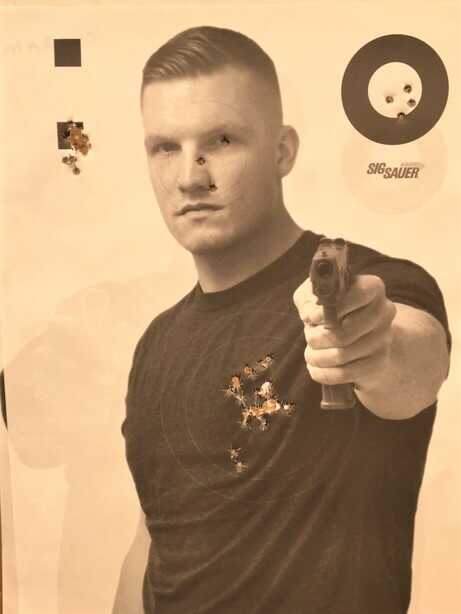
The second day featured dynamic individual drills like the famous “Blaze X” involving movement, cover, multiple targets and one-handed shooting on the clock. The ROMEO2 always gave me a dot when I needed one.
The final drill was SIG’s Task Conditions and Standards (TCS) drill designed to validate critical skills with Pistol Mounted Optics. Using a SIG photo realistic target like those shown above, TCS is shot at 5 yards using the 8-inch chest hit zone and the 4-inch face hit zone. Rounds must be inside the hit zone to count, line breaks are out. Each shooter is timed individually.
- Fire one round from the low ready in 1.25 seconds.
- Draw and fire one round in 2 seconds.
- Draw and fire one round dominant hand only in 2 seconds.
- Draw and fire six rounds from the holster in 3.75 seconds.
- Load one round in the chamber with an empty magazine. Draw and fire one round from the holster, reload and shoot five rounds in 6.25 seconds.
- Using three SIG targets 1 yard apart, draw and fire two rounds to the chest of T1, two rounds to the face of T2 and two rounds to the chest of T3 in 6.25 seconds.
If you complete 5 of 6 tasks to standards, you get a nifty SIG velcro patch. Thanks to ROMEO2, I met all the standards with no issues. Less than half the class got a patch.
I did most of my shooting in this class with steel cased COVID ammo. The P320 accepted this with grace and gave me no malfunctions. The optic maintained zero for 1000 rounds and did everything I asked of it. While I did not hammer nails with the ROMEO2, racking it against a barricade and on my gear felt solid and had no effect on function or accuracy.
I brought 1500 rounds of ammunition to this class (This represented much of my entire lifetime of accumulated wealth). The class did not quite make it to 1000 rounds, but I used our lunchtimes to get in some extra work and got through two whole 500 round boxes of TULA Russian steel.
The class exercised every handgun skill and the ROMEO2 performed. I used the full shroud and did not see any issues with the field of view. Even in alternative positions which present the dot on the edges of the optic, I was easily able to find my dot.
I found the ROMEO2 easy to use with large well-marked controls. I had no issues finding the dot and came away with a better opinion of 6 MOA dots. It fit in my holster and ROMEO2 inspired me to fearlessly bang it against barricades and gear. It was everything I hoped for and I was sad that I had to give it back.
I was very fortunate to get my hands on a ROMEO2 and wring it out. The rugged design and modular features make it the great duty optic that soldiers and cops have been waiting for. Serious recreational shooters will also find these qualities appealing. The ROMEO2 Mil-Spec Red Dot Sight will soon be available at a SIG dealer near you. I have seen internet reports that the MSRP will be $779, but I am hoping to find them in the wild for around $599. I hope I get to the front of the line when they arrive.


Spoiler alert, Aaron loves it…..
https://youtu.be/AJA9Z1Tu3mo
Was wondering if this sight will mont to a Springfield XDM OSP in 10mm?
If it has a DeltaPoint footprint, ROMEO2 should bolt right on. If it has another footprint, you can get an adapter plate.
I’m just going to wait for Aaron Cowan of Sage Dynamics to test it.
I am looking forward to that too. Aaron Cowan does an amazing job and has done great service to the community with his tests.